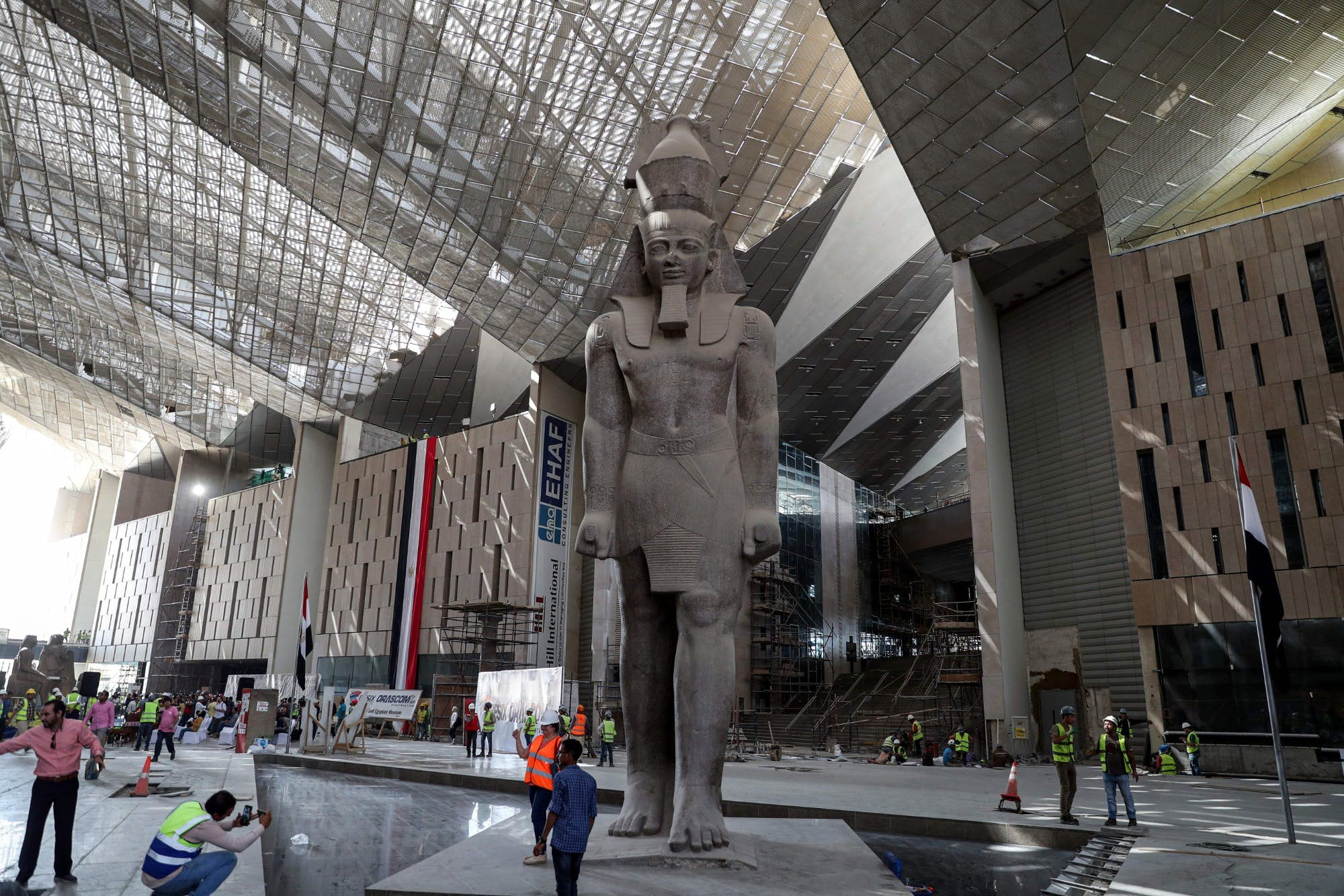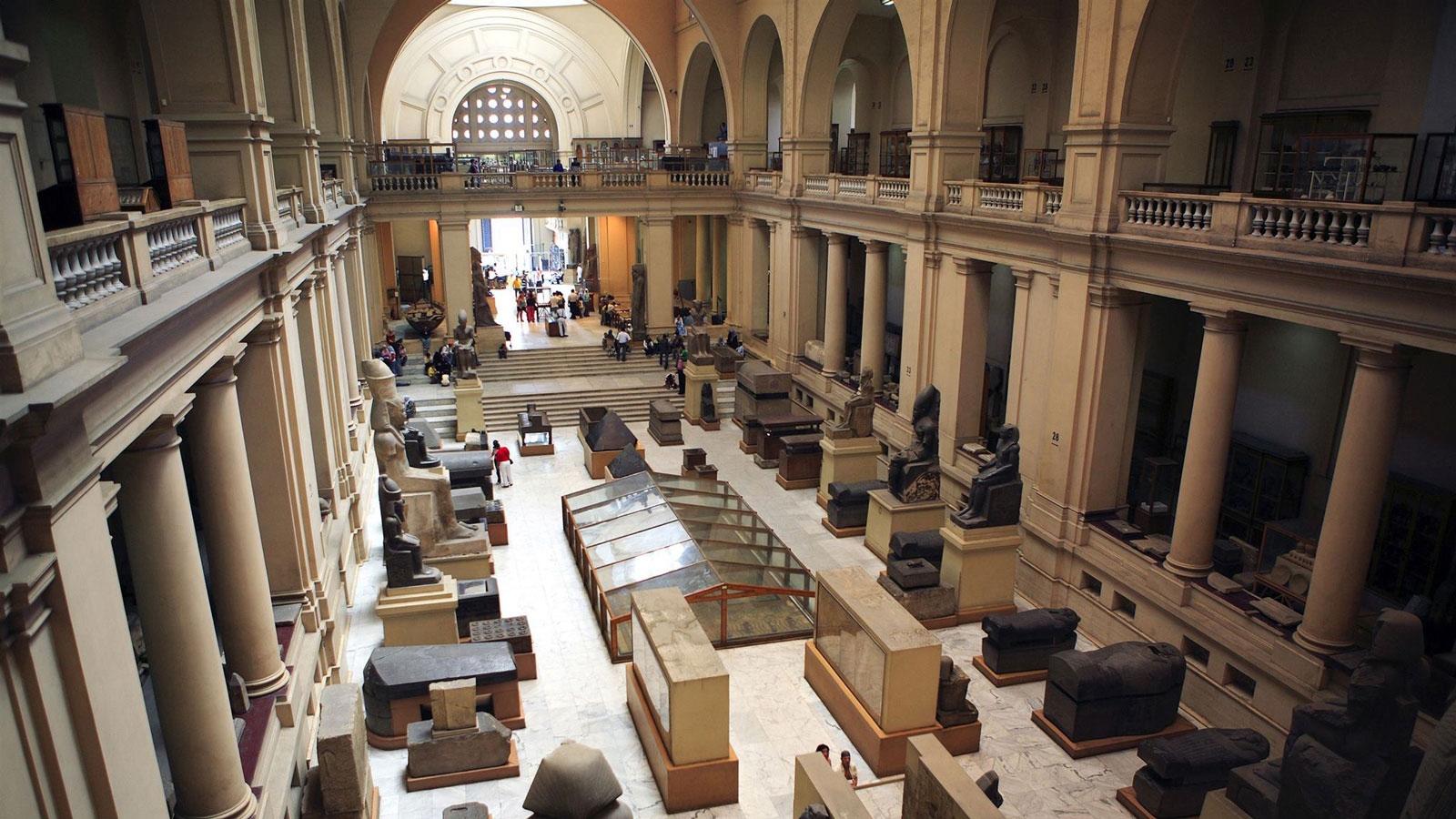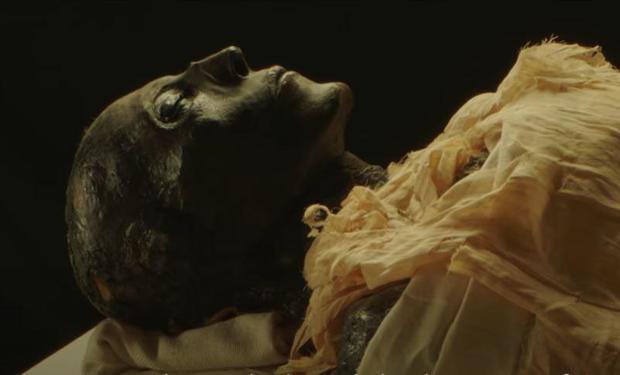The Museum
On Saturday, April 3rd, 2021, the city of Cairo held a parade on its central streets, closing off traffic and attracting numerous onlookers. In the procession, hundreds of volunteers dressed in reproduction ancient Egyptian attire marched ahead, carrying drums and prop ritualistic offerings. The “Pharaohs’ Golden Parade” garnered international attention for its wild spectacles, but not simply for the strange dress of its participants. It was the guests of honor, rather, which attracted attention, guests who had been dead for over three thousand years.
A New Kind of Museum
This grand display, while certainly a spectacle in itself, also served a rather mundane purpose for the Egyptian government. The procession’s main purpose was to transport the mummified remains of twenty two ancient Egyptian pharaohs, including those of Ramses II, Hatshepsut, and Amenhotep III, to Giza’s new museum of ancient Egyptian history, titled the Grand Egyptian Museum. Set to open in 2021, the museum offers a much-needed shift from the Egyptian Museum in Cairo’s Tahrir Square, which lacked the necessary facilities and technology to care for the mummified remains of pharaohs and their belongings.

Along with the mummified remains, the museum will also exhibit all of the known burial items of Tutankhamun together for the first time since their removal from the Valley of Kings in 1922. Equipped with the largest conservation lab in the Middle East, conservators at the museum have had the momentous task of preparing these items for display, a difficult deed considering the massive number of artifacts and their individual intricacy. According to CNN, the Grand Egyptian Museum has set aside 7,000 square meters of exhibit space for the Tutankhamun collection alone.
A Public Tomb

The real stars of the museum, however, are the mummies themselves. Transported to their new resting place in custom-made, shockproof hearses, the remains of these pharaohs will be displayed in a new style of exhibition space, according to a spokesperson of the museum. “The new showroom is more like a one-way circle maze. All the walls are black, with spotlights on the mummies,” Sayed Abu-El Fadal stated in an interview with CBS News. “It is designed like the tombs in the Valley of the Kings.” This exhibition style is a strong pivot from the display choices of the mummified remains’ former resting places at Cairo’s Egyptian Museum. Far more traditional in its layout and composition, the display cases and exhibition rooms of the Egyptian Museum offered a no-frills venue in which to examine the country’s former rulers, whom they exhibited on the floor of the main hall of the museum.
The Grand Egyptian Museum’s decision to display the mummified remains in a dark, maze-like exhibit space, inspired by the private tombs in which the rulers originally rested in the Valley of the Kings, demonstrates a shift in philosophy in the exhibition of mummified remains. Where the Egyptian government was once content in displaying the bodies of their former rulers in a standard museum hall, as nondescript in their glass cases as any other artifact, the exhibition style of the Grand Egyptian Museum marks a cultural shift in the treatment of mummified human remains in the museum space, one in favor of the humanization of remains. The evocation of a tomb, or a private, contemplative funerary space, restores a sense of humanity to the mummies that was lacking in their former exhibit housing. Instead of simply being an object of study, the mummified remains become real people again, connected to the history of their lives through their more obvious association with death. As prominent Egyptian archaeologist Zahi Hawas states, “every mummy has a story, every mummy is magic.”
Controversy
Yet while the new exhibition space provides a new level of humanity to the remains of the rulers, some critics object to the display of the mummies at all. Sheikh Ahmed Karima, a professor at Egypt’s Al-Azhar University, decried the decision to continue the display of mummified remains at the Grand Egyptian Museum, stating, “these are our accentors, we shouldn’t have them displayed for some dollars and euros.” Islam prohibits the exhumation of human remains for non-scientific reasons, a doctrine Karima cites in his rebuke of the museum. Archaeologist Zahi Hawass rebutted Karima’s assertions, stating that the display of ancient Egyptian mummies is admissible in Islamic tradition, as the pharaohs displayed were not Muslim, Christian, or Jewish.

“The opinion of Sheikh Karima can be applied to thieves who tamper with graves and destroy mummies, but archaeologists work to immortalise these people, as they restore their coffins, graves and mummies, because the presence of these coffins inside the wells exposes them to decomposition and fragmentation.”
– Archaeologist and Egyptologist Zahi Hawass.
Yet Karima’s beliefs represent a common discomfort among many scholars surrounding the display of mummified remains. The debate over human remains and their role in the museum space is nothing new, having been waged over the past several decades amidst institutional overhauls in pursuit of a more ethical philosophy of archaeological display. Scholars of the museum world have repeatedly asked: is it ethical to display the remains of those who have died? What benefit is there to the display of human remains? And, importantly, whose remains deserve to remain private?
Exploring a Modern Mummy Parade
The Egyptian government’s recent parade of ancient Egyptian pharaohs captivated the minds and fascination of viewers from around the world. Click below to explore this event and find out more about its utility for both cultural heritage preservation and cultural production.
